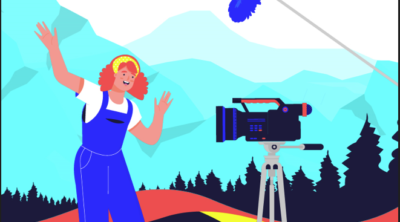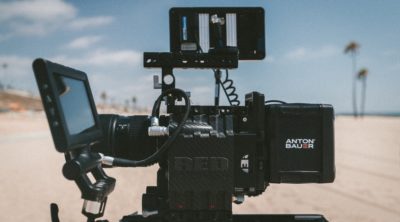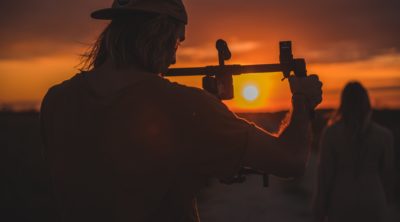< Back to all posts
Adding Production Value Through Camera Movement
Movement: an increasingly popular strategy that we industry folk use to add production value. A dolly shot, jib shot or aerial shot can add great value to your production – and everyday it becomes more affordable to achieve those shots. In the last 20 years, if you wanted an aerial shot, dolly shot, or crane shot you would have to spend significant chunk of change. These days there are more affordable avenues producers and media managers can take that do not involve a Hollywood budget.
Dolly shots are a very common request (probably because they are the most affordable). A Dolly functions by allowing the camera to move smoothly along a horizontal axis, while also allowing the camera to still pan, tilt, and zoom. The movement can sometimes be so subtle that you don’t even notice it at all. My personal favorite examples of how a dolly shot can dramatically improve the value is in a dolly timelapse shot. These shots are taken sometimes over the course of hours and require a mechanism like the CAMblock to execute the movement smoothly. When done properly, the end result can increase the dramatic feel that these timelapses generally lack.
Crane shots are beautiful and can make any boring shot into a gorgeous masterpiece of cinematography. A crane (or jib) operates by allowing the camera to move smoothly along a vertical axis, while also maintaining the camera’s ability to pan, tilt, and zoom. Cranes and jibs tend to lend themselves well to establishing shots. For example, the camera will start off 30 feet in the air and end on an extreme close up of a person on the ground (or visa versa). The Akela Crane demo video is of a giant crane that can scale houses. How cool is that?
Aerial shots are the new craze. Back in the day, if you wanted an aerial shot you needed a specialized camera rig suited for a helicopter and, oh yea…A HELICOPTER! So just a few short years ago the budget for aerial shots was pretty massive. Aerial shots have become much more affordable, and with the recent swell in RC copters, the FAA has had to step in and regulate the operation of radio controlled aircrafts.
“Acquiring an FAA 333 waiver is a lot of work. It requires about 200-300 man hours and lots and lots of research and knowledge of writing operations manuals and pilot operating handbooks. Every aircraft must have a 30 plus page manual accompanying it. It was one of the most difficult applications that my team and I have ever tackled” said Jordy Klein Jr., Crews Control represented DP.
Don’t let that deter you because where there’s a will there is a way – and Crews Control has you covered from all directions.
#ProTip – On your next production, talk to your Director of Photography about shooting an interview with two DSLR cameras. Have them rig a dolly on the wide shot, and just to the left or right of the dolly place the camera that will be zoomed in for a close up of the interviewee. This will not only allow your editor to break up the interview (which is basically a boring talking head), but it also adds some serious production value to your end video product. Check out this video by John Kinhart who shoots many of his interviews like this. I have the video cued up to just before the interviews so you can see an example of how movement can add production value to your video.
I am always curious to know how others are adding value to their production so if you think I missed something, let’s discuss it!
Crews Control crews are the best in the world – if you have a project in need of a talented on-location film crew to get that perfect shot, we have them. Click here for a quote – and connect with us on Facebook, Twitter, and LinkedIn.







You left a gaping hole in your conversation about movement. Hello Steadicam? It frees you from fixed platforms that you talked about. It can go anywhere I can walk or run and when that is not good enough you can mount it to numerous vehicles. 0-70 miles per hour.
You forgot to mention Steadicam and the new Movi. Not all shoots are interviews or standups, as shown in the John Kinhart video.